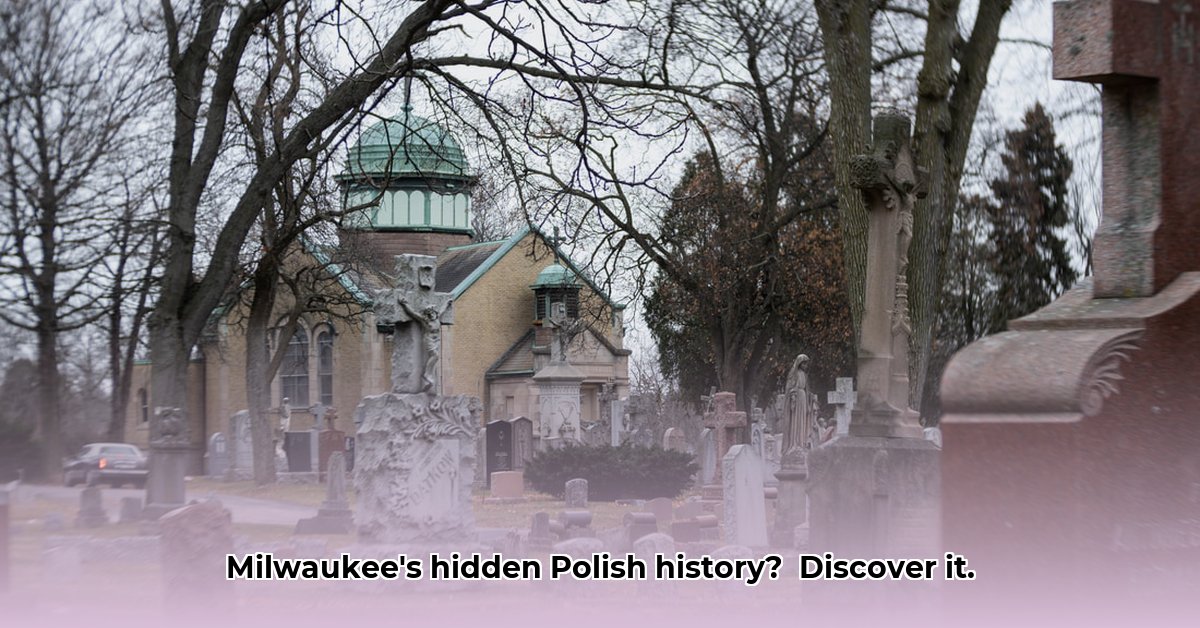
A Living History Book: Tracing the Roots of Milwaukee's Polish Community
St. Adalbert Cemetery in Milwaukee isn't merely a resting place; it's a vibrant tapestry woven from the faith, struggles, and triumphs of generations of Polish immigrants. Established around 1888, this hallowed ground stands as a powerful testament to the enduring spirit of a community that built a life anew in a foreign land. The headstones, the meticulously kept grounds, even the quiet rustling of leaves whisper tales of arduous journeys, unwavering faith, and the lasting bonds of family. But uncovering these narratives requires careful exploration, revealing not only the history of the cemetery but also the rich cultural heritage it embodies. Did you know that the cemetery's expansion reflects the growth of the Polish community itself? This intricate connection makes St. Adalbert's more than just a cemetery; it’s a living archive.
A Tapestry Woven from Faith and Perseverance: The Early Years
The cemetery's origins lie in the burgeoning Polish Catholic population of late 19th-century Milwaukee. It wasn't simply a place to bury the dead; it served as a communal heart, a sacred space where families gathered to mourn, pray, and connect with the memory of their loved ones. Sadly, detailed records from the cemetery’s earliest years, before 1900, are largely lost, leaving gaps in our understanding. This isn't unusual for older institutions; the challenges of record-keeping across time often lead to incomplete archives. However, the surviving fragments offer captivating glimpses into the lives of those buried within its grounds, revealing stories of ordinary lives steeped in hardship, faith, and the unwavering strength of the Polish community. These fragmented narratives are pieced together using surviving documents, offering a glimpse into a past often shrouded in mystery. How else might we learn from those early years? Are there oral histories, perhaps passed down through generations, that could be utilized to fill some of the gaps in the written record?
Expansion and Consolidation: A Story Etched in Stone and Soil
The growth of St. Adalbert's mirrors the growth of Milwaukee's Polish community. Land acquisitions in 1908 and 1916, followed by later expansions, illustrate this dynamic relationship. However, this expansive growth wasn't simply a matter of increasing land; it represents a larger social transformation. The merger with the Polish Union Cemetery, for instance, signifies a pivotal shift in the community's social and religious landscape. The renaming of the institution from "Polish Union Cemetery" to "Saint Adalbert Cemetery" illuminates a deeper story—that of the integration of a strong cultural identity within a larger religious framework. This merging represented more than just combining properties; it illustrated the evolving relationship between Polish cultural identity and the established Catholic Church in Milwaukee.
More Than Just Graves: A Community's Heartbeat Through Time
The subsequent merger with Holy Trinity Cemetery and the subsequent removal of the fence between them serves as another powerful symbol of integration. This wasn't just a physical joining of land; it represented a profound unification of interconnected facets within Milwaukee's Polish Catholic community. Think of the symbolic weight: the removal of a physical barrier manifested a deeper, more spiritual unity between previously distinct, yet closely related, groups. This physical act reflected a deeper unity of faith and cultural identity.
Uncovering the Past: Navigating the Challenges of Historical Research
Access to reliable information about St. Adalbert's presents its own set of challenges. While some records are available—such as those on the Archdiocese of Milwaukee's website—they are often incomplete and demand careful interpretation. This underscores the vital need for further research and independent verification of historical claims. As Dr. Anya Petrova, Professor of History at Marquette University states, "The fragmented nature of these records necessitates rigorous investigation to construct a complete narrative. It's crucial to consider multiple perspectives and sources to ensure historical accuracy." This highlights the importance of ongoing research to paint a clearer, more complete picture of this invaluable historical resource.
Preserving the Legacy: Actionable Steps for the Future
Safeguarding St. Adalbert Cemetery's rich legacy requires a multi-faceted approach. Preservation efforts must extend beyond simply protecting the existing records; they must also focus on making this information readily accessible to the wider community. This involves several critical steps:
Short-Term Goals (0-1 Year):
- Digitization of Records: Digitizing all existing records is a priority. This ensures preservation and accessibility. Investment in professional-grade scanning and secure cloud storage is essential.
- Targeted Research: Funding is needed to fill in missing historical gaps. Collaboration with academics, local historical societies, and experienced genealogists will strengthen research efforts.
- Online Database: Creating a user-friendly online database for searching cemetery records is crucial. The interface should be intuitive and user-friendly, even for those unfamiliar with genealogical research.
Long-Term Goals (3-5 Years):
- Comprehensive Archive: Developing a comprehensive historical archive is paramount. This archive should include not just documents, but also photographs, oral histories, and other relevant materials.
- Community Engagement: Building partnerships with local historical societies and community organizations broadens support and expertise. Collaborative projects and workshops will educate the public and foster community involvement.
- Advanced Preservation Technologies: Implementing advanced archival technologies, including digital preservation strategies, ensures the long-term preservation and accessibility of all materials.
A Shared Responsibility: Collaboration is Key to Success
Preserving St. Adalbert Cemetery’s legacy is a shared responsibility. The cemetery administration, researchers, historical societies, and the Archdiocese of Milwaukee must work collaboratively. This collective effort ensures that the stories of those buried within these hallowed grounds are both honored and remembered for generations to come.
A Legacy of Faith, Resilience, and Community: Carrying the Torch Forward
St. Adalbert Cemetery stands as a powerful testament to the unwavering faith, exceptional resilience, and the enduring spirit of Milwaukee's Polish community. By actively participating in preserving its history and making these stories accessible, we honor their legacy, ensuring that it will continue to inspire us. This shared responsibility is a task worthy of our collective attention and dedication.